Related Research Articles

English musician Phil Collins has released 8 studio albums, 1 live album, 5 compilation albums, 2 remix albums, 3 soundtrack albums, 2 box sets, 50 singles, 18 video albums, and 41 music videos. A Grammy and Academy Award-winning solo artist, Collins has sold more than 34.5 million albums in the United States, and 150 million records worldwide.

"The Love Cats" is a song by English rock band the Cure, released as a stand-alone single in October 1983.

Old New Borrowed and Blue is the fourth studio album by the British rock group Slade. It was released on 15 February 1974 and reached No. 1 on the UK Albums Chart. It has been certified Gold by BPI. The album was produced by Chas Chandler. For the album, Slade attempted to begin breaking away from their usual rock formula. For example, the singles "My Friend Stan" and "Everyday" were piano-led and did not have the typical "Slade" sound.
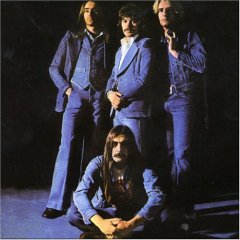
Blue for You is the ninth studio album by English rock band Status Quo. It was released in March 1976, and is the last album until 1980's Just Supposin' that the band produced themselves.

Breakfast at Sweethearts is the second studio album by Australian pub rock band Cold Chisel, released in February 1979. It spent 32 weeks in the national charts, reaching a peak of number 4.

"Sounds of Then (This Is Australia)" is a 1985 song by Australian rock band, GANGgajang, from their self-titled debut album, GANGgajang. "Sounds of Then" was written by front man, Mark "Cal" Callaghan, who provides lead vocals and guitar. He co-produced the album with fellow band member, Graham Bidstrup, and Joe Wissert (Earth, Wind & Fire, Helen Reddy, the J. Geils Band) at Rhinoceros Studios.
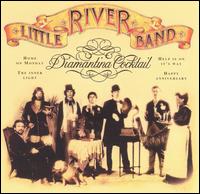
Diamantina Cocktail is the third studio album by the Australian rock group Little River Band, released in April 1977. It peaked at No. 2 on the Australian Kent Music Report Albums Chart and reaching No. 49 on the Billboard 200. A different version was released in the US by Harvest in May 1977. The album was certified Gold in the US by the RIAA in January 1978 for over 500,000 copies sold.
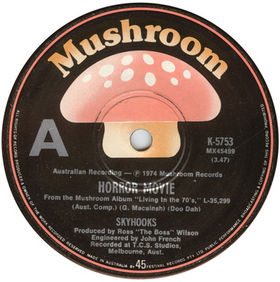
"Horror Movie" is a song by Australian band Skyhooks, released in December 1974 as the second and final single from the band's debut studio album, Living in the 70's. The song peaked at number one in Australia, staying there for two weeks in March 1975. The single was greatly helped along by the band's appearance on the then-new ABC pop music TV show Countdown.

"My Mistake" is a 1977 song by New Zealand art rock group Split Enz. It was released in September 1977 as the lead single from their studio album Dizrythmia.

"I See Red" is a 1978 song by New Zealand art rock group Split Enz. It was released in December 1978 as the lead single from their studio album Frenzy.

First Under the Wire is the fifth studio album by Australian group Little River Band, released in July 1979 by Capitol Records. The album peaked at No. 2 on the Australian Kent Music Report Albums Chart and at No. 10 on the Billboard 200, becoming the group's highest-charting album in that territory. The album included two top 10 Billboard Hot 100 hits in "Lonesome Loser" and "Cool Change".
"The Wild Side of Life" is a song made famous by country music singer Hank Thompson. Originally released in 1952, the song became one of the most popular recordings in the genre's history, spending 15 weeks at number one on the Billboard country chart, solidified Thompson's status as a country music superstar and inspired the answer song, "It Wasn't God Who Made Honky Tonk Angels" by Kitty Wells. In 1999, the song was inducted into the Grammy Hall of Fame.

After Hours is the second studio album from the Australian rock band Little River Band, released in April 1976. It peaked at No. 5 on the Australian Kent Music Report Albums Chart.
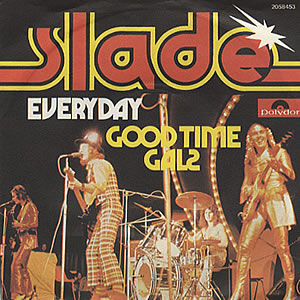
"Everyday" is a song by the British rock band Slade, released in 1974 as the second single from their fourth studio album, Old New Borrowed and Blue. It was written by lead vocalist Noddy Holder, bassist Jim Lea and his wife Louise Lea (uncredited), and was produced by Chas Chandler. It reached number 3 in the UK Singles Chart and spent seven weeks in the top 50. The single was certified UK Silver by BPI in April 1974, only three days after its release.

"In My Life" is rock song by Australian band Divinyls. It was released in November 1984 as the second single from their second studio album What a Life! and charted within the top fifty on the Australian singles chart, peaking at number forty-seven.
"He's My Number One" is a pop song written by Terry Britten and B. A. Robertson and recorded by Australian pop singer Christie Allen. The song was released in January 1980 as the fourth single from Allen's debut studio album, Magic Rhythm (1979). The song peaked at number 4 on the Kent Music Report in Australia.
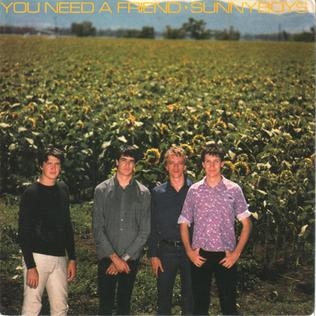
"You Need a Friend" is a song recorded by Australian power pop band, Sunnyboys. It is written by lead singer-guitarist, Jeremy Oxley, and was released in April 1982 as the lead single of the band's second studio album, Individuals. "You Need a Friend" peaked at No. 38 on the Kent Music Report singles chart.
"This Is My City" is a song by Australian band Skyhooks, released in July 1976 as the second single from the band's third studio album, Straight in a Gay Gay World. The song peaked at number 32 in Australia.

It's a Long Way There (Greatest Hits) is the first compilation album by the Australian group Little River Band, released in Australia and New Zealand in September 1978. The album peaked at No. 4 on the Australian Kent Music Report albums chart and No. 12 in New Zealand. The album sold over 200,000 copies in Australia. Retitled It's a Long Way There (1975–1979) it was re-issued in Germany for the European market in 1979.
"Curiosity (Killed the Cat)" is the debut single by Australian band Little River Band, released in September 1975 from their self-titled debut studio album. The song peaked at number 15 on the Australian Kent Music Report singles chart.
References
- 1 2 Kent, David (1993). Australian Chart Book 1970–1992 (illustrated ed.). St Ives, N.S.W.: Australian Chart Book. p. 179. ISBN 0-646-11917-6.